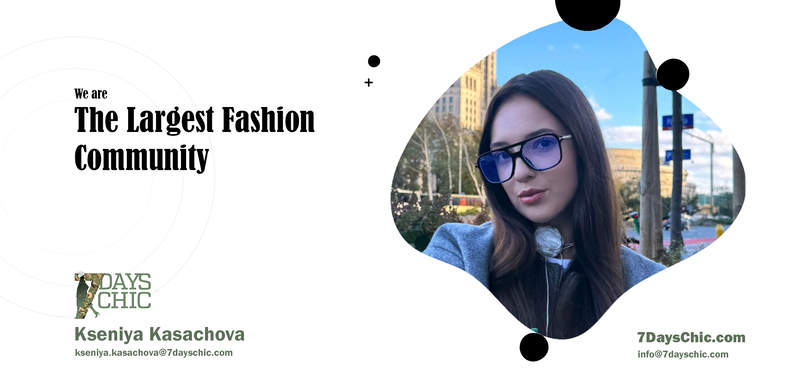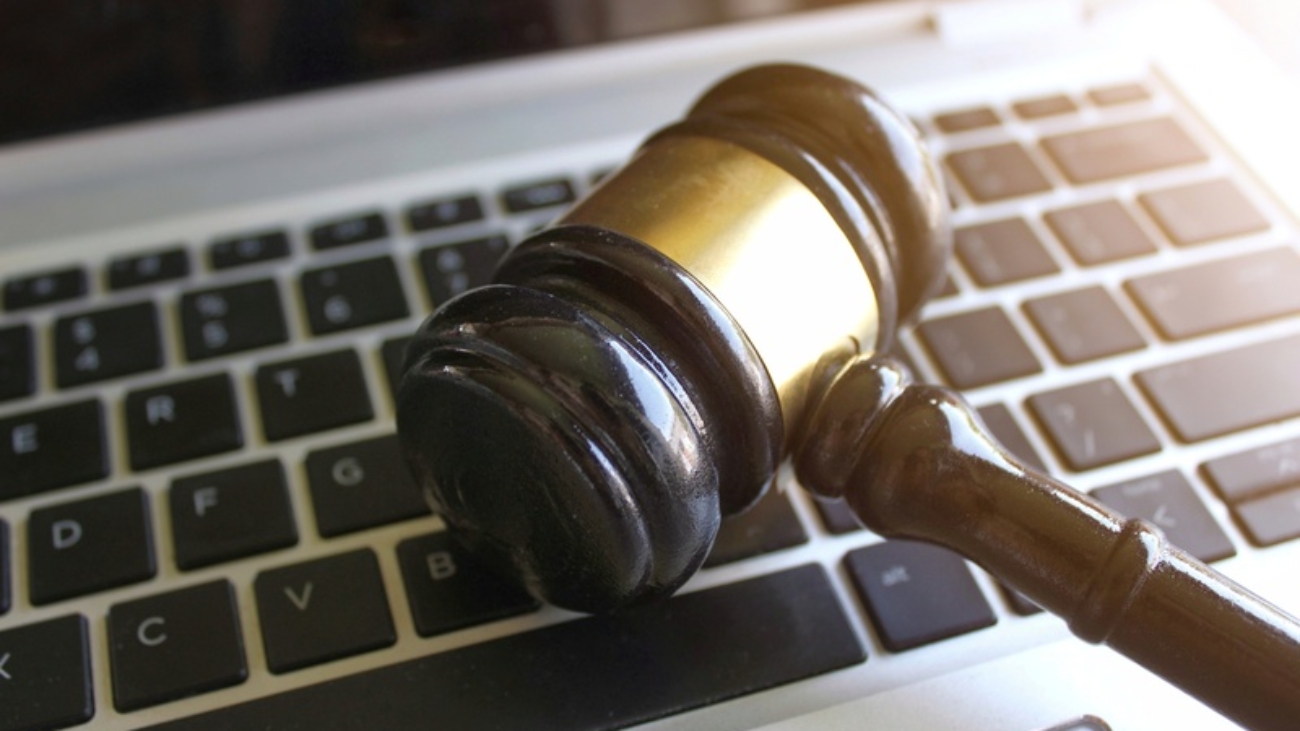8. The Role of Digital Platforms and Social Media in IPR
The digital age has transformed how content is created, shared, and consumed, with social media platforms and e-commerce sites becoming integral parts of this ecosystem. These platforms allow creators to reach vast audiences, but they also present challenges when it comes to protecting intellectual property rights (IPR). Copyright infringement, counterfeit goods, and the unauthorized use of digital content are persistent issues that these platforms must address. Below, we examine how digital platforms and social media play a critical role in IPR protection, from content moderation policies to tackling counterfeit products.
Content Moderation Policies and Copyright Protection on Social Media
Content moderation on social media platforms is essential to ensuring that intellectual property rights are respected. Social media giants like Facebook, Instagram, and Twitter allow users to upload and share vast amounts of content, ranging from photos and videos to music and written works. However, this free flow of content also increases the risk of unauthorized use, such as uploading copyrighted works without permission.
In response to these challenges, social media platforms have developed content moderation policies that involve both automated and human oversight to detect and remove infringing content. For example, YouTube has implemented a system called Content ID, which scans uploaded videos for copyrighted music, videos, or other media. When a match is found, the system automatically either blocks the video, monetizes it for the copyright holder, or provides them with the option to take further action. This automated system is one of the most sophisticated content moderation tools, and it allows creators to protect their rights without having to manually search for infringing content.
Similarly, Facebook and Instagram use rights management systems that allow copyright holders to report and request the removal of infringing content. These platforms also collaborate with industry groups, such as the Recording Industry Association of America (RIAA), to better detect and address content violations.
However, while these systems have significantly reduced instances of copyright infringement, challenges remain. The sheer volume of user-uploaded content means that some infringing material may still slip through, and the systems may also sometimes mistakenly flag legitimate content as infringing. The balance between user freedom and protecting the rights of content creators is a constant challenge for these platforms.
YouTube, Facebook, and TikTok: Addressing IPR Violations
Platforms like YouTube, Facebook, and TikTok are at the forefront of the battle against IPR violations due to the massive amount of user-generated content they host. Each platform has developed unique strategies for addressing copyright violations and protecting intellectual property.
- YouTube: YouTube is one of the largest platforms for video content, and with that comes the challenge of managing millions of videos uploaded daily. The platform’s Content ID system automatically scans videos for copyrighted material, such as music, videos, and TV shows. If copyrighted material is detected, the copyright holder is given several options: the video can be monetized on their behalf, blocked, or removed, depending on the creator’s preferences. YouTube also offers a dispute process if content creators feel their videos were flagged unfairly. The platform has been relatively successful in addressing IPR violations, but challenges persist, particularly with live streaming and user-generated content that may bypass automated systems.
- Facebook: Facebook and its subsidiary, Instagram, use a similar rights management system to YouTube’s Content ID. Copyright holders can register their content with Facebook’s Rights Manager, which allows them to claim ownership over uploaded media and enforce their rights across the platform. Facebook also works with industry groups and content creators to ensure that their rights are protected. The platform has increasingly focused on handling IPR issues by integrating better reporting tools and increasing transparency, so users can easily see the status of any content they report. However, Facebook faces challenges with the rapid spread of infringing content across the platform, particularly in private groups or through shared links.
- TikTok: TikTok, a rapidly growing platform known for short-form videos, faces its own unique IPR challenges. Due to the nature of its content—often involving music and choreography—users frequently upload videos that may violate copyright laws by using unlicensed music or footage. To address this, TikTok has implemented a system similar to YouTube’s Content ID called TikTok Sound Library.
The library offers users access to a collection of licensed music, reducing the chances of copyright infringement. TikTok also works with rights holders to ensure that content is removed or appropriately attributed when it is used without permission. Despite these efforts, TikTok has faced significant backlash from the music industry for not doing enough to protect copyright, particularly with regard to unauthorized song usage.
These platforms must continuously adapt their strategies to combat the ever-growing challenges posed by user-uploaded content. Despite the improvements made in automated systems, human oversight and industry cooperation remain crucial for enforcing IPR on these platforms.
The Role of E-Commerce Platforms in Counterfeit Product Detection
E-commerce platforms, such as Amazon, Alibaba, and eBay, have revolutionized global trade, enabling businesses and individuals to buy and sell products from virtually anywhere in the world. However, this vast marketplace has also created significant challenges in terms of counterfeit products, which can be sold alongside legitimate goods. Counterfeit goods not only infringe on the intellectual property rights of brands and creators but also pose risks to consumers, including potential safety concerns.
To tackle the issue of counterfeit products, e-commerce platforms have developed several systems aimed at detecting and removing infringing listings.
For instance:
- Amazon: Amazon has implemented the Brand Registry program, which allows brands to register their intellectual property with Amazon and gain greater control over listings that use their trademarks. The system allows brands to proactively report counterfeit products and removes fraudulent listings more quickly. Additionally, Amazon uses machine learning algorithms to identify suspicious products and prevent counterfeit listings from appearing on the site in the first place. Despite these efforts, the vast number of products listed on Amazon means counterfeit items can still occasionally slip through the cracks, and counterfeit sellers often use sophisticated tactics to hide their true identities.
- Alibaba: Alibaba, which operates large e-commerce platforms like AliExpress and Taobao, has faced significant scrutiny for its role in the sale of counterfeit products. To address this, Alibaba has invested in the Alibaba Anti-Counterfeiting Alliance (ACA), which collaborates with brands to identify and take down counterfeit listings. The company also uses big data and AI to track and identify suspicious sellers and counterfeit goods.
Despite these efforts, Alibaba has faced criticism for not doing enough to combat counterfeiting, especially on platforms like Taobao, where counterfeit goods are widespread.
- eBay: eBay, a global online auction platform, has implemented systems to detect and prevent the sale of counterfeit goods. The Verified Rights Owner (VeRO) program allows intellectual property owners to report counterfeit listings and have them removed. eBay also uses AI tools to scan listings for potential infringement, and it actively cooperates with rights holders to ensure that counterfeit products are taken down quickly. However, like other platforms, eBay must contend with the challenge of sellers circumventing detection and continuing to offer counterfeit products under different listings or aliases.
While e-commerce platforms have made significant strides in combating counterfeit products, the sheer volume of goods sold online, along with the use of sophisticated methods by counterfeiters, means that the problem persists. E-commerce platforms must continue to invest in advanced technologies, collaborate with brands and law enforcement, and improve their reporting systems to effectively tackle the issue.
9. IPR and Artificial Intelligence
Artificial Intelligence (AI) has drastically transformed many industries, from healthcare to entertainment, by enhancing creativity, improving efficiencies, and solving complex problems.
As AI becomes more integrated into the creation process, questions surrounding the ownership of AI-generated content, the patenting of AI innovations, and the ethical implications of AI’s role in intellectual property rights (IPR) are becoming increasingly important. The legal landscape surrounding IPR and AI is still evolving, and addressing these challenges is crucial to ensure the continued protection of creators’ rights and the fostering of innovation.
Ownership Rights of AI-Generated Content
One of the central debates in the intersection of IPR and AI is determining who owns the rights to content generated by AI. Traditionally, intellectual property laws—such as copyright—have recognized human creators as the sole beneficiaries of protection, as these laws were designed to safeguard works that result from human creativity and effort. However, AI-generated content complicates this framework because AI systems can autonomously generate music, art, literature, and even inventions without direct human involvement.
In current legal frameworks, there is no clear path for granting ownership of AI-generated content. For example, under copyright law in many jurisdictions, only human creators can hold copyright. This has led to situations where AI-created works cannot be copyrighted, leaving the creator of the AI or the user who instructed the AI to create the content in a legal limbo.
Some argue that the owner of the AI should hold the rights, while others contend that the person who directed or programmed the AI should be entitled to ownership. For instance, if an artist uses an AI tool to generate digital art, should the artist own the rights to the piece, or does the tool’s developer (who created the AI) have a claim to the work? In some countries, legislation is evolving to address AI’s role in intellectual property, but there is still no consistent global standard.
The situation is further complicated when it comes to patents and the protection of inventions created by AI. Patent offices are faced with the question of whether AI systems can be recognized as inventors and whether inventions generated by AI should be patentable. The lack of clarity around these issues makes it difficult for creators and companies to know how to protect their AI-generated works.
Patenting AI Innovations
AI technologies themselves are eligible for patent protection, as they are considered inventions that can offer unique solutions to various technical problems. However, patenting AI innovations presents several challenges, primarily due to the rapidly changing and dynamic nature of AI technology.
AI systems are often built on vast datasets and can evolve through machine learning processes, making it difficult to pinpoint a clear “inventive step” in the traditional sense. For example, AI innovations are often incremental, built on prior art, and constantly improving based on new data. This poses challenges when attempting to prove that an AI-driven invention is novel and non-obvious—a requirement for securing a patent.
The patent application process for AI innovations involves proving that the AI system or method represents a significant advance over existing technology, which can be difficult because AI’s iterative nature means that many AI-related inventions are variations of previous ideas or improvements on existing systems. Additionally, patenting AI is complicated by issues related to ownership, as AI itself cannot be named as an inventor under current patent laws, and there may be multiple contributors—programmers, data scientists, and the AI itself—whose contributions need to be accurately represented.
As a result, patenting AI inventions requires inventors and businesses to carefully navigate the patent process, addressing legal and technical complexities while ensuring that their innovations are adequately protected. The rapidly evolving field of AI may also lead to the need for updated patent laws that are more suited to the unique nature of AI-generated inventions.
Ethical and Legal Implications of AI in IPR
The rise of AI in intellectual property creation and innovation raises numerous ethical and legal concerns. One of the primary ethical issues is the concept of originality in AI-generated works. AI systems can mimic existing artistic styles or generate works based on patterns and data fed into them, leading to questions about whether AI-generated content is truly original or simply derivative.
For instance, AI tools like DALL·E or MidJourney can generate stunning visual art based on prompts given by users. These AI systems can create works that mimic the style of famous artists, raising questions about the extent to which these creations can be considered “original” or if they are infringing upon the intellectual property rights of the artists whose work the AI has learned from. The line between inspiration and infringement becomes blurred when AI systems generate content that is highly reminiscent of existing copyrighted works.
Additionally, AI tools that create content based on data, such as generating text based on existing literature or producing music using pre-recorded sound samples, can raise concerns about the extent of the work’s originality and whether it might infringe on the rights of the original creators. This poses a dilemma for intellectual property laws, which traditionally protect human authors’ rights to their original works but may struggle to apply these concepts to creations made by machines.
Another concern is bias in AI-generated content. AI systems are trained on large datasets, and these datasets often reflect societal biases, whether related to race, gender, or other factors. When AI systems generate content based on biased data, they may inadvertently perpetuate harmful stereotypes or reinforce existing inequalities.
This raises ethical questions about responsibility, accountability, and the potential for misuse of AI in creative industries.
The potential misuse of intellectual property by AI tools is also a major concern. AI can easily replicate copyrighted works, and the risk of using AI to create pirated or counterfeit content has increased. For instance, AI-generated music or artwork could be used in unauthorized commercial projects, which could infringe on the original creators’ rights. Moreover, AI could be used to create deepfakes—highly realistic but fake media that can damage reputations or mislead audiences—raising significant ethical and legal challenges around privacy, consent, and the protection of intellectual property.
Finally, the question of AI ownership itself complicates the legal framework. If an AI system generates content, is the work “owned” by the AI, the programmer, or the user? This issue is critical not just for protecting creators’ rights but for shaping the future of AI development and creativity. As AI becomes more integrated into creative industries, legal and ethical guidelines will need to evolve to address these issues.
10. Best Practices for Protecting IPR in the Digital Age
As digital technologies continue to transform the creative and business landscapes, protecting intellectual property rights (IPR) has become more complex. In the digital age, where content can be easily copied, shared, and distributed globally, effective strategies to safeguard IPR are crucial for creators and businesses. The following best practices can help mitigate the risks of infringement and ensure that creators maintain control over their intellectual property.
Digital Watermarking and Content Tracking
One of the most effective ways to protect digital content from unauthorized use is through digital watermarking. Digital watermarking involves embedding an invisible marker or code into a piece of content, such as an image, video, or audio file. This marker contains information about the ownership of the content and can be traced back to the original creator or copyright holder. Even though the watermark is not visible to the naked eye, it can be detected by specialized software.
This method serves several key functions in protecting IPR:
- Content Identification: When digital content is shared or uploaded online, watermarking allows creators or businesses to track the use of their material. If the content is distributed or reproduced without authorization, the watermark can help identify the source and prove ownership.
- Deterrence of Infringement: Knowing that content is watermarked can deter potential infringers, as it makes it easier for copyright holders to identify unauthorized copies and take legal action.
- Proof of Ownership: Watermarking provides a reliable form of proof that a piece of content was created by a specific individual or organization. This can be vital in disputes or when seeking to enforce IPR.
Watermarking is particularly useful in industries where digital content is at high risk of being stolen or pirated, such as the music, film, and photography industries. However, while watermarking can be effective, it is not foolproof. Skilled infringers can attempt to remove or alter watermarks, so it is often used in conjunction with other protection measures, such as content monitoring systems.
Effective Use of Licensing and Agreements
Licensing agreements are an essential tool for creators, businesses, and organizations looking to protect and monetize their intellectual property. Licensing allows the IP owner to grant others the right to use their work while retaining control over how it is used, ensuring that creators receive compensation for their creations.
There are several types of licensing that can be employed to protect IPR in the digital age:
- Exclusive Licensing: With an exclusive license, the IP holder grants a single party the exclusive right to use their work. This means the creator cannot license the work to any other party for the duration of the agreement. Exclusive licensing is commonly used in industries like software, music, and film, where companies seek control over the distribution or usage of their products.
- Non-exclusive Licensing: In contrast, a non-exclusive license allows the IP holder to license the same work to multiple parties. This is often used in industries such as publishing or software distribution, where the IP holder wants to reach a broader audience and maximize revenue without giving up control of the work.
- Royalty Agreements: Many licensing agreements include provisions for royalty payments, which provide ongoing income for the creator based on the use or sale of the intellectual property. For example, an author might license the film rights to their book, with the agreement specifying that they will receive a percentage of the revenue generated from movie ticket sales or streaming platforms.
- Software Licensing: Software developers commonly use licensing agreements to control how their software is distributed and used. Common types of software licenses include end-user license agreements (EULAs), open-source licenses, and subscription models.
By clearly outlining the terms of use, software developers can protect their code and prevent unauthorized duplication or redistribution.
Licensing also offers a way to protect against misuse of intellectual property. A well-drafted licensing agreement includes provisions that specify the scope of usage, territorial restrictions, time limits, and quality control measures. These clauses ensure that the IP is used as intended and in a manner that preserves the reputation of the creator or business.
1. Best practices for licensing agreements include:
- Clearly defining the scope of use (e.g., for commercial or personal purposes).
- Specifying geographical regions and timeframes in which the license applies.
- Including provisions for royalties or other compensation methods.
- Outlining terms for breach of the agreement, including penalties and remedies for unauthorized use.
Through well-designed licensing agreements, creators can generate revenue from their intellectual property while ensuring that their rights are respected and protected. Additionally, licensing allows for the expansion of their work into new markets and industries, such as merchandise, film, or gaming, all while maintaining control over how the work is used.
2. Digital Rights Management (DRM) Systems
Digital Rights Management (DRM) is another important tool in protecting IPR in the digital age. DRM involves the use of technologies and protocols to control access to and use of digital content. It is commonly used in the music, film, and e-book industries to prevent unauthorized distribution and copying of digital files.
Some common DRM techniques include:
- Encryption: Protecting digital content by encoding it so that only authorized users with the correct decryption key can access it.
- Access Control: Restricting how and where content can be accessed, such as limiting the number of devices that can use a particular file or setting expiration dates for access.
- Copy Protection: Preventing users from copying, distributing, or altering digital content by embedding protection mechanisms in the file itself. While DRM can be effective in reducing piracy and unauthorized distribution, it is not without controversy. Some critics argue that DRM can limit consumers’ ability to use content as they see fit, such as transferring files between devices or making backups. As a result, DRM must strike a balance between protecting IPR and maintaining user rights.
Monitoring and Enforcement
Continuous monitoring of digital content is essential for enforcing IPR. By using technology and legal tools, creators can track unauthorized use of their works and take prompt action when necessary. This includes:
- Automated Content Detection: Platforms like YouTube, Instagram, and Facebook use automated tools to identify and remove infringing content, such as pirated music or videos.
- Takedown Notices: Copyright holders can issue formal takedown notices under laws such as the Digital Millennium Copyright Act (DMCA) to request the removal of infringing content from platforms.
- Litigation: In cases of serious infringement or when other measures fail, copyright holders may pursue legal action to protect their rights.
Continue Reading:
Intellectual Property Rights (IPR) in the Digital Age / Part 1
Intellectual Property Rights (IPR) in the Digital Age / Part 2
Intellectual Property Rights (IPR) in the Digital Age / Part 3
Intellectual Property Rights (IPR) in the Digital Age / Part 4
Written by Kseniya Kasachova




Add a Comment